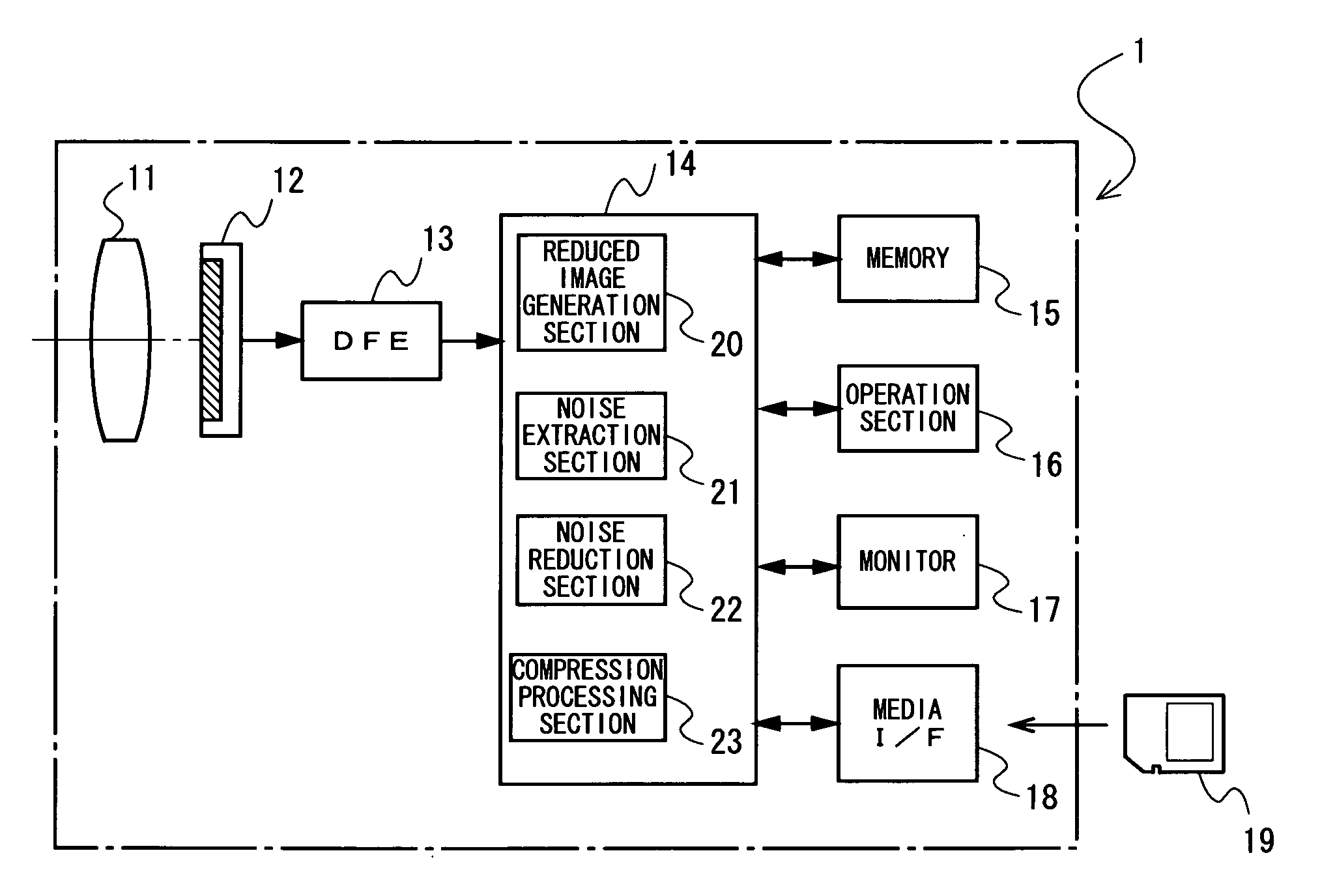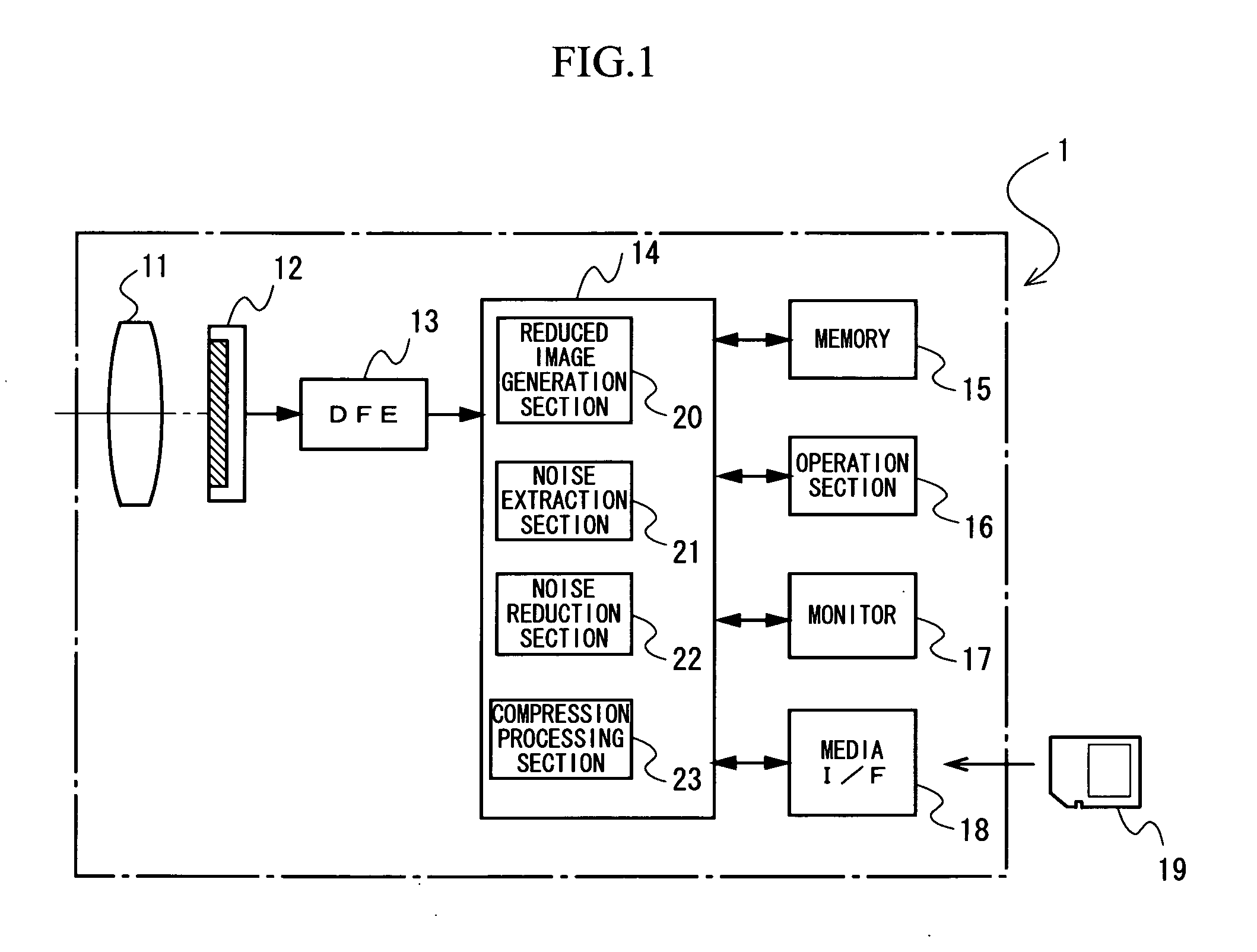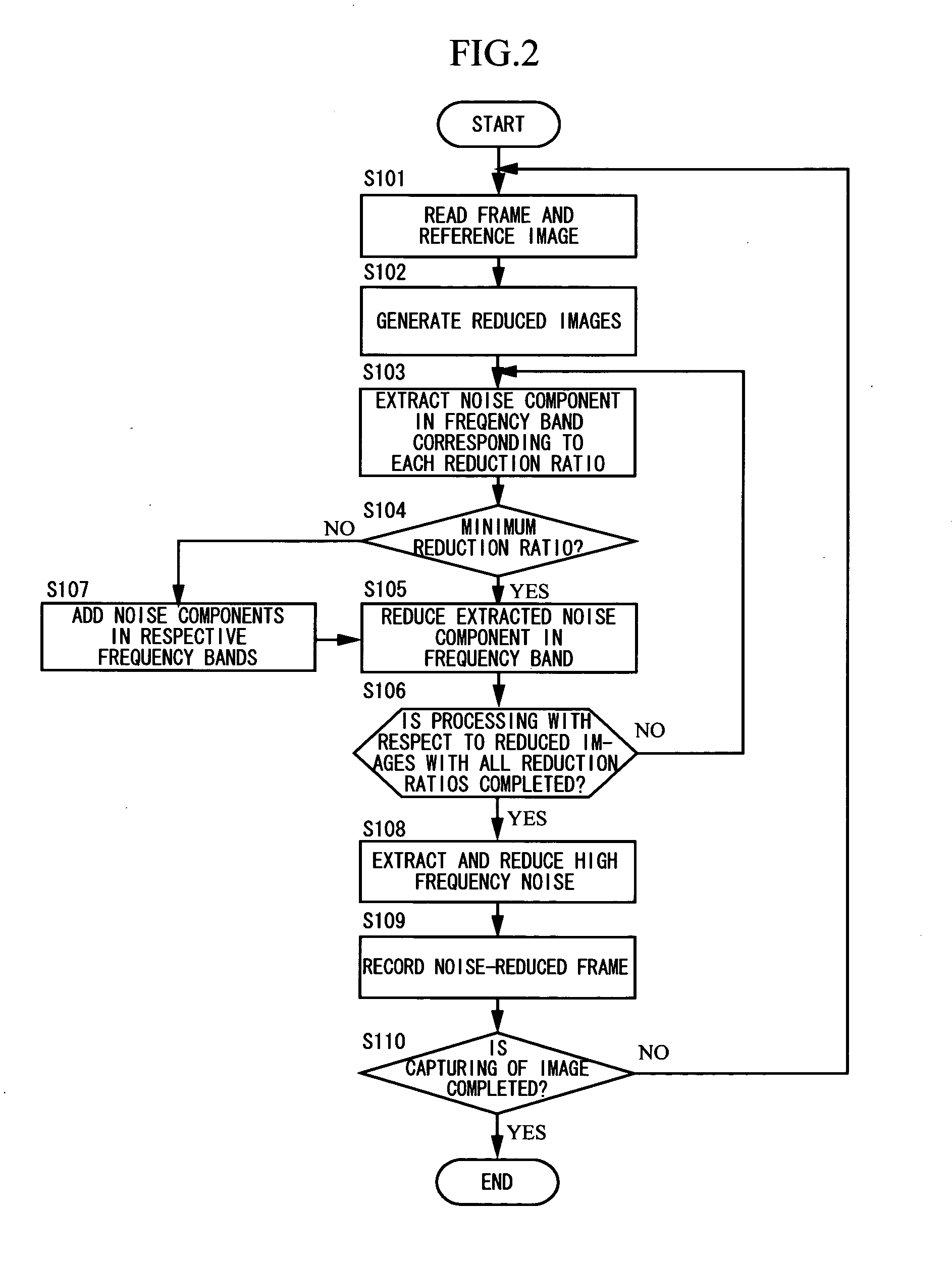Image processing apparatus, imaging apparatus, and computer readable medium
a technology of image processing and imaging apparatus, which is applied in the field of image processing apparatus, imaging apparatus and computer readable medium, can solve the problems of blurred image of subject, inability to properly reduce noise, and difficulty in distinguishing between motions of subjects
- Summary
- Abstract
- Description
- Claims
- Application Information
AI Technical Summary
Benefits of technology
Problems solved by technology
Method used
Image
Examples
first embodiment
[0072]FIG. 1 is a block diagram illustrating an example of a configuration of a digital camera 1 according to a first embodiment.
[0073]The digital camera 1 of the present embodiment includes an imaging optical system 11, an image sensor 12, a DFE 13, a CPU 14, a memory 15, an operation section 16, a monitor 17 and a media I / F 18. Here, the DFE 13, the memory 15, the operation section 16, the monitor 17 and the media I / F 18 are respectively connected to the CPU 14.
[0074]The image sensor 12 is a device capturing a subject image formed by a luminous flux that passes through the imaging optical system 11. An output of the image sensor 12 is connected to the DFE 13. Note that the image sensor 12 of the present embodiment may also be a progressive scanning type solid-state image sensor (CCD or the like) or an XY address type solid-state image sensor (CMOS or the like).
[0075]On a light-receiving surface of the image sensor 12, a plurality of light-receiving elements are arranged in a matri...
second embodiment
[0105]A digital camera according to a second embodiment of the present application has the same configuration as that of the digital camera 1 according to the first embodiment in FIG. 1, so that detailed explanation of respective components will be omitted.
[0106]FIG. 4 illustrates a flow chart of a processing operation performed by a digital camera 1 of the present embodiment. In FIG. 4, processing similar to that of the first embodiment illustrated in FIG. 2 is denoted by a step number whose last two digits are the same as those of the step number of the processing in the first embodiment, and detailed explanation thereof will be omitted.
[0107]FIG. 5 illustrates a flow of image data in the processing illustrated in FIG. 4. In FIG. 5, image data which are the same as the image data in the first embodiment illustrated in FIG. 3 are denoted by the same reference numerals and letters, and detailed explanation thereof will be omitted.
[0108]A point in which the processing operation perfo...
third embodiment
[0114]FIG. 6 is a block diagram illustrating an example of a configuration of a digital camera 1′ according to a third embodiment.
[0115]In the digital camera 1′ according to the present embodiment, a component which operates in the same manner as the component of the digital camera 1 according to the first embodiment illustrated in FIG. 1 is denoted by the same reference numeral, and detailed explanation thereof will be omitted.
[0116]A reduced image generation section 50 generates a reduced image of each frame of a moving image captured by the image sensor 12. The reduced image generation section 50 generates a reduced image of each frame (target image) at one reduction ratio of 1 / 4 (first reduced image). Note that the reduced image generation section 50 of the present embodiment does not generate a reduced image of a reference image to be a reference of noise reduction processing. Further, the reduced image generation section 50 may also generate a plurality of reduced images of th...
PUM
 Login to View More
Login to View More Abstract
Description
Claims
Application Information
 Login to View More
Login to View More - R&D
- Intellectual Property
- Life Sciences
- Materials
- Tech Scout
- Unparalleled Data Quality
- Higher Quality Content
- 60% Fewer Hallucinations
Browse by: Latest US Patents, China's latest patents, Technical Efficacy Thesaurus, Application Domain, Technology Topic, Popular Technical Reports.
© 2025 PatSnap. All rights reserved.Legal|Privacy policy|Modern Slavery Act Transparency Statement|Sitemap|About US| Contact US: help@patsnap.com



